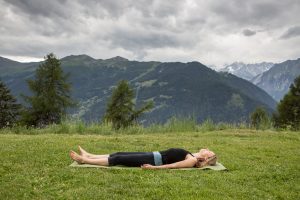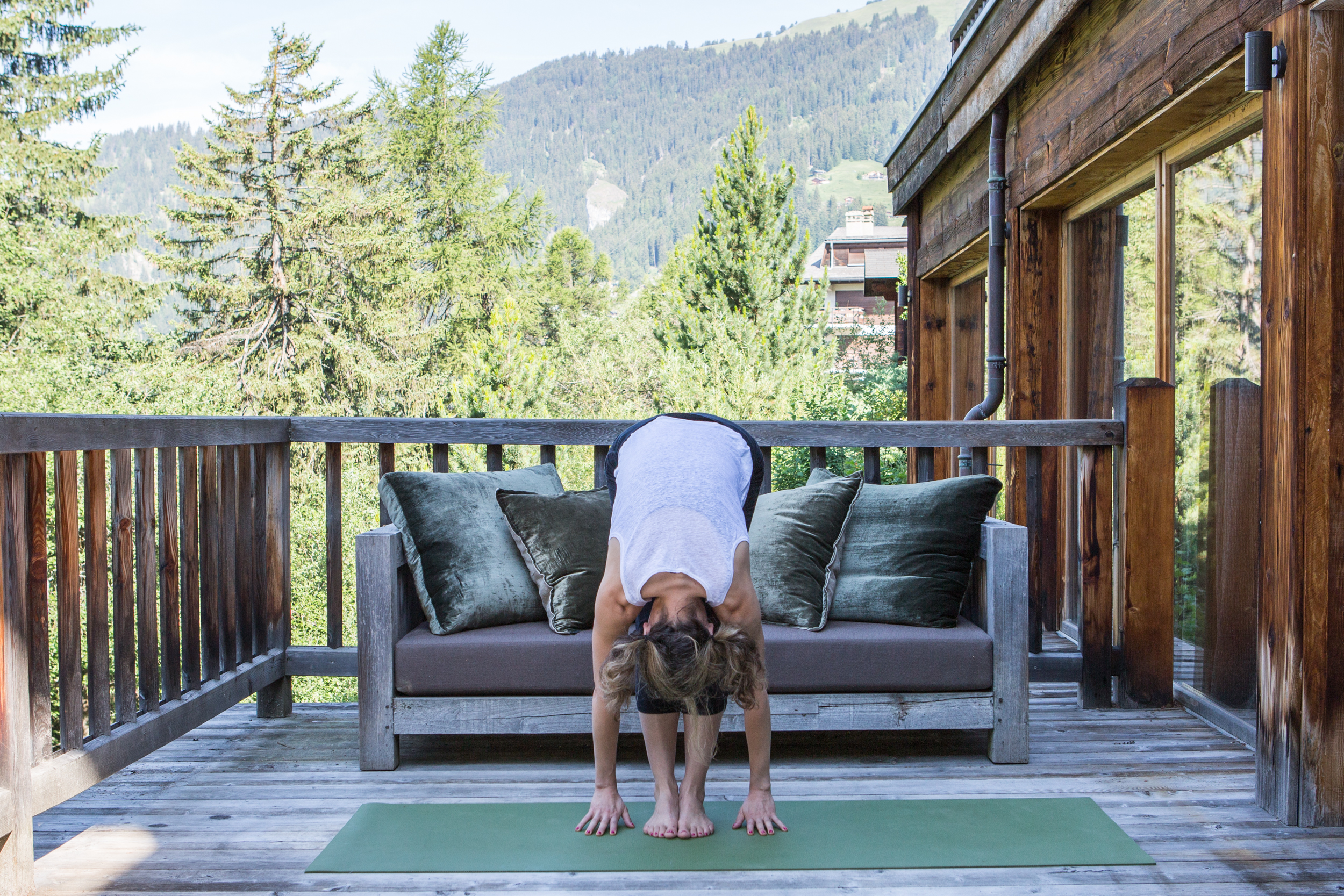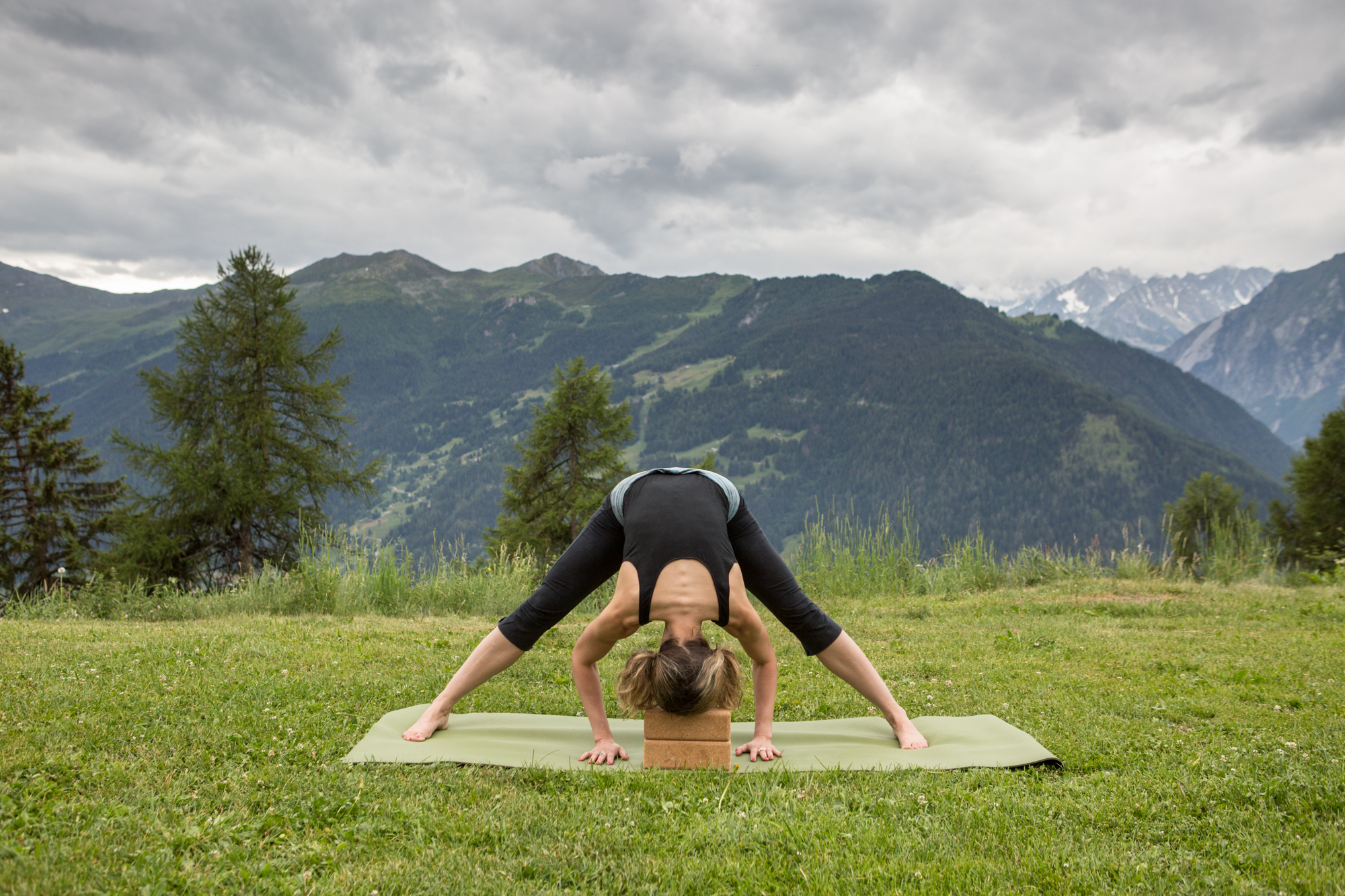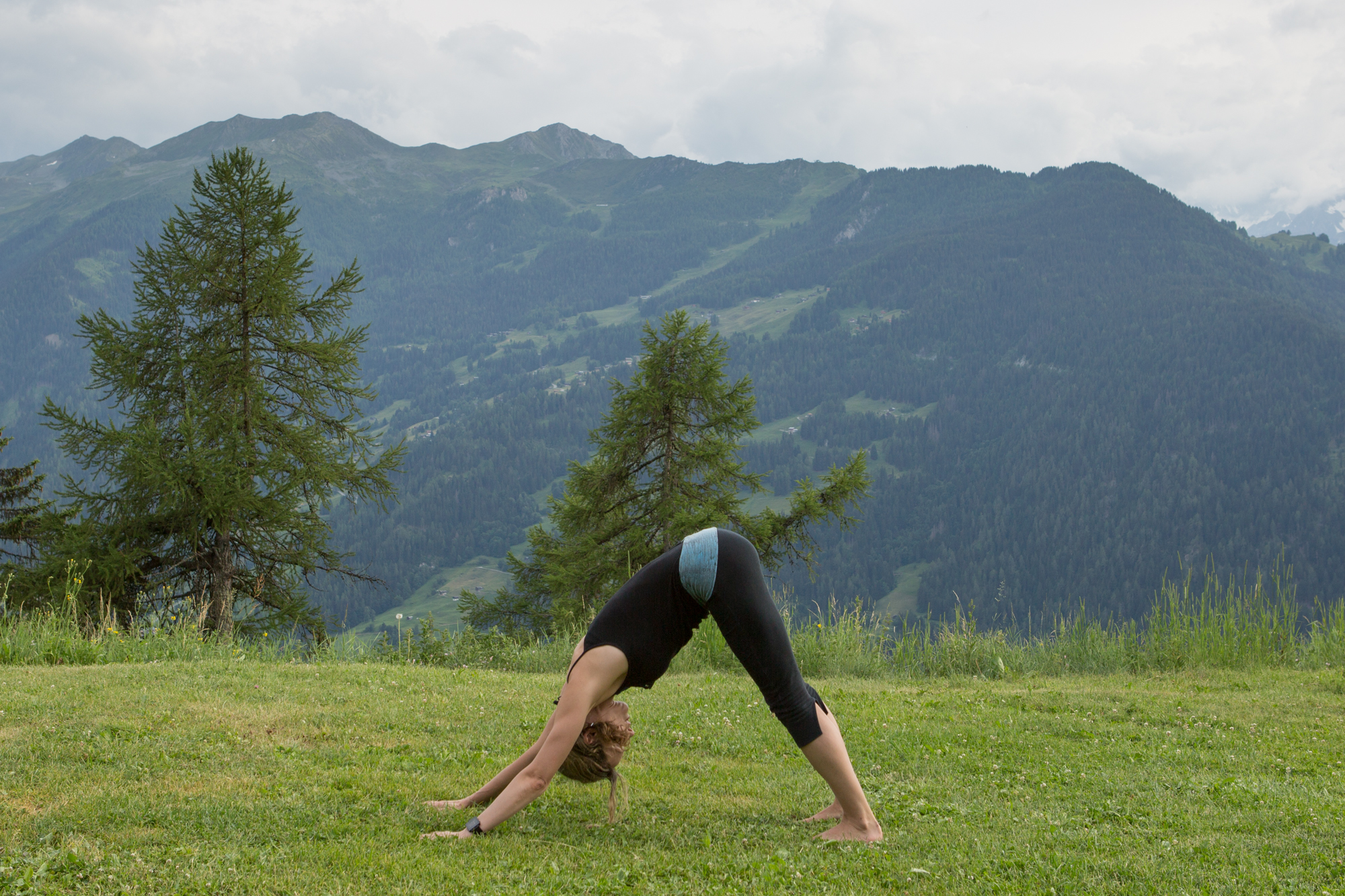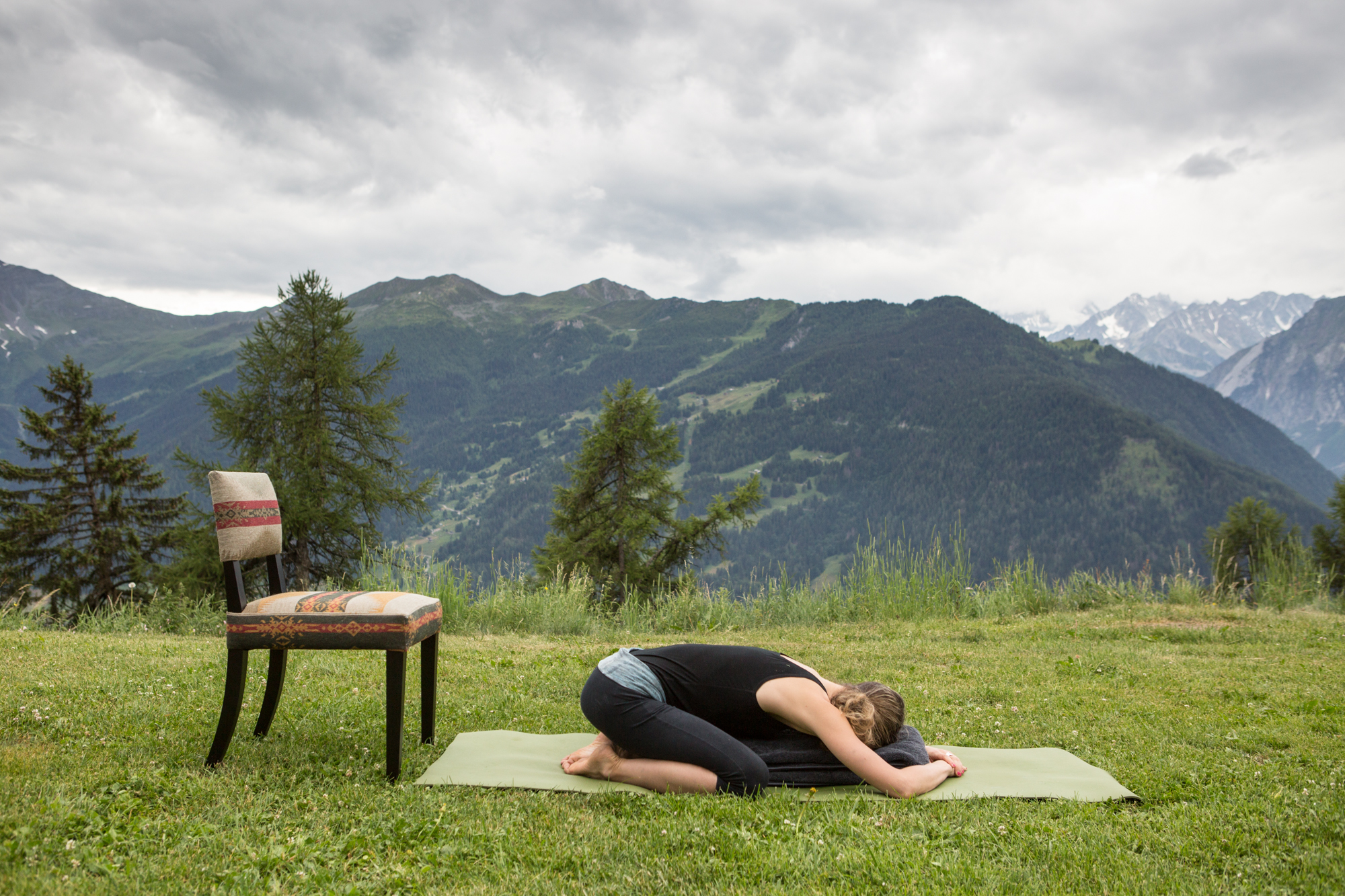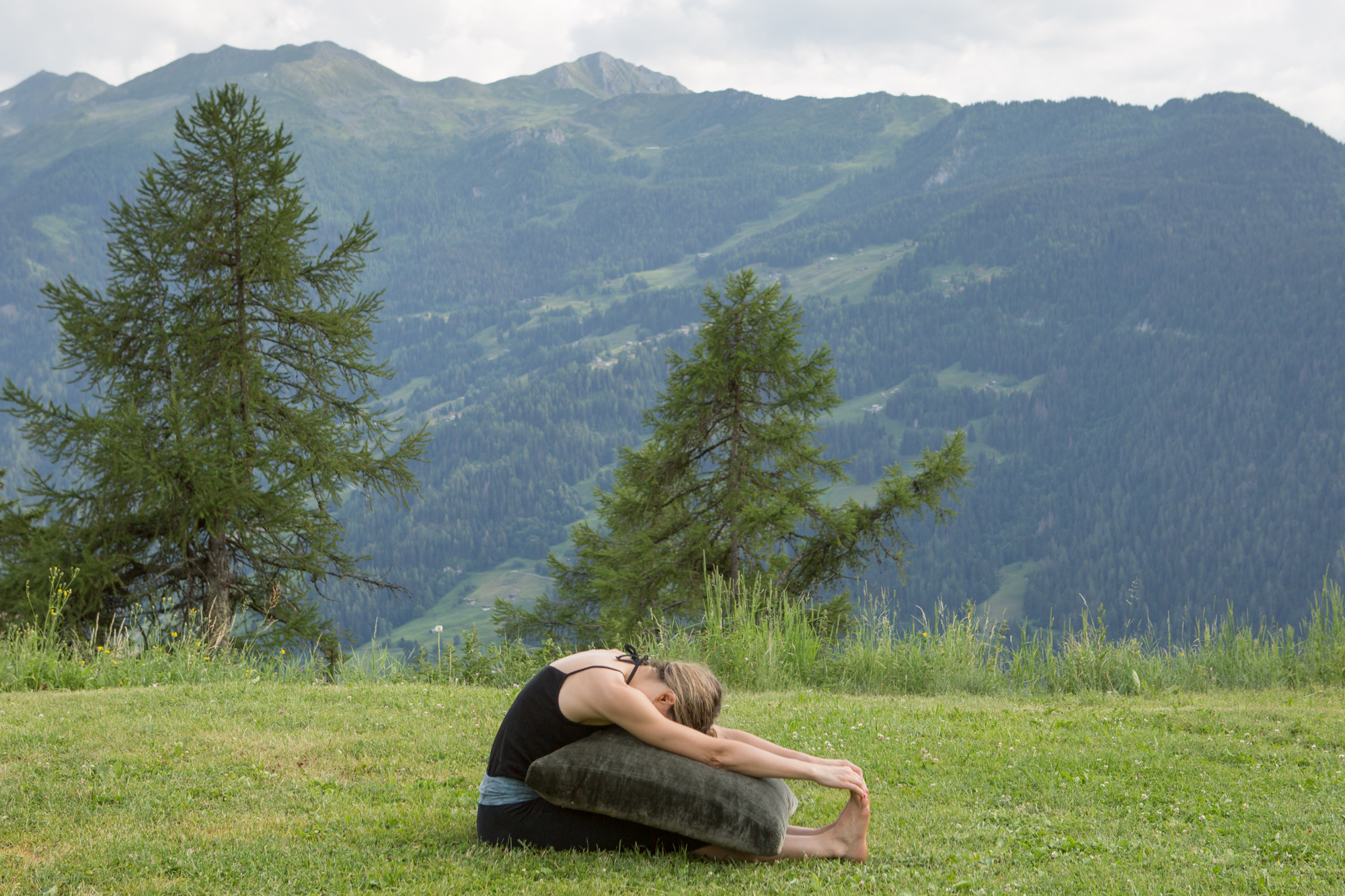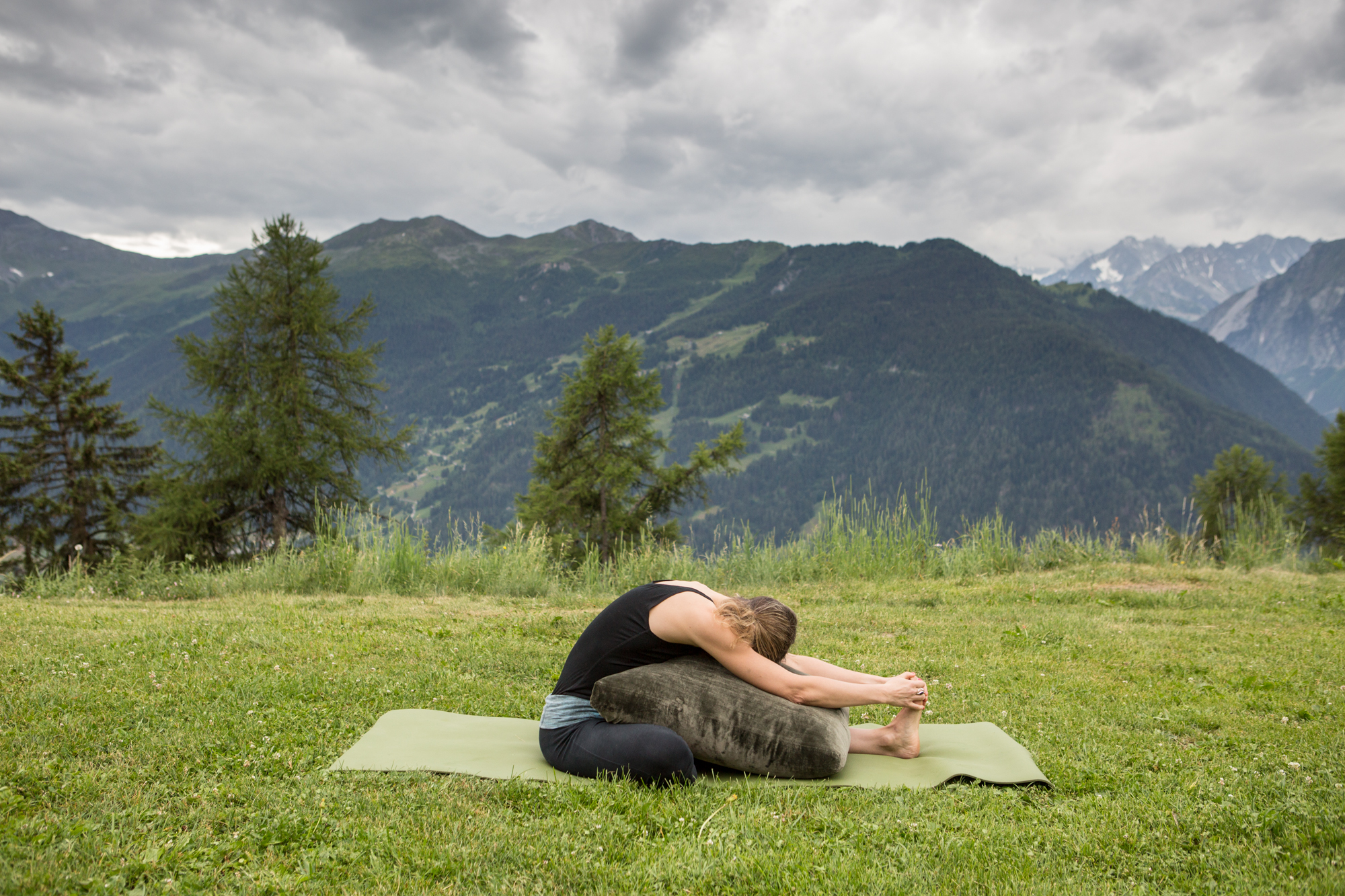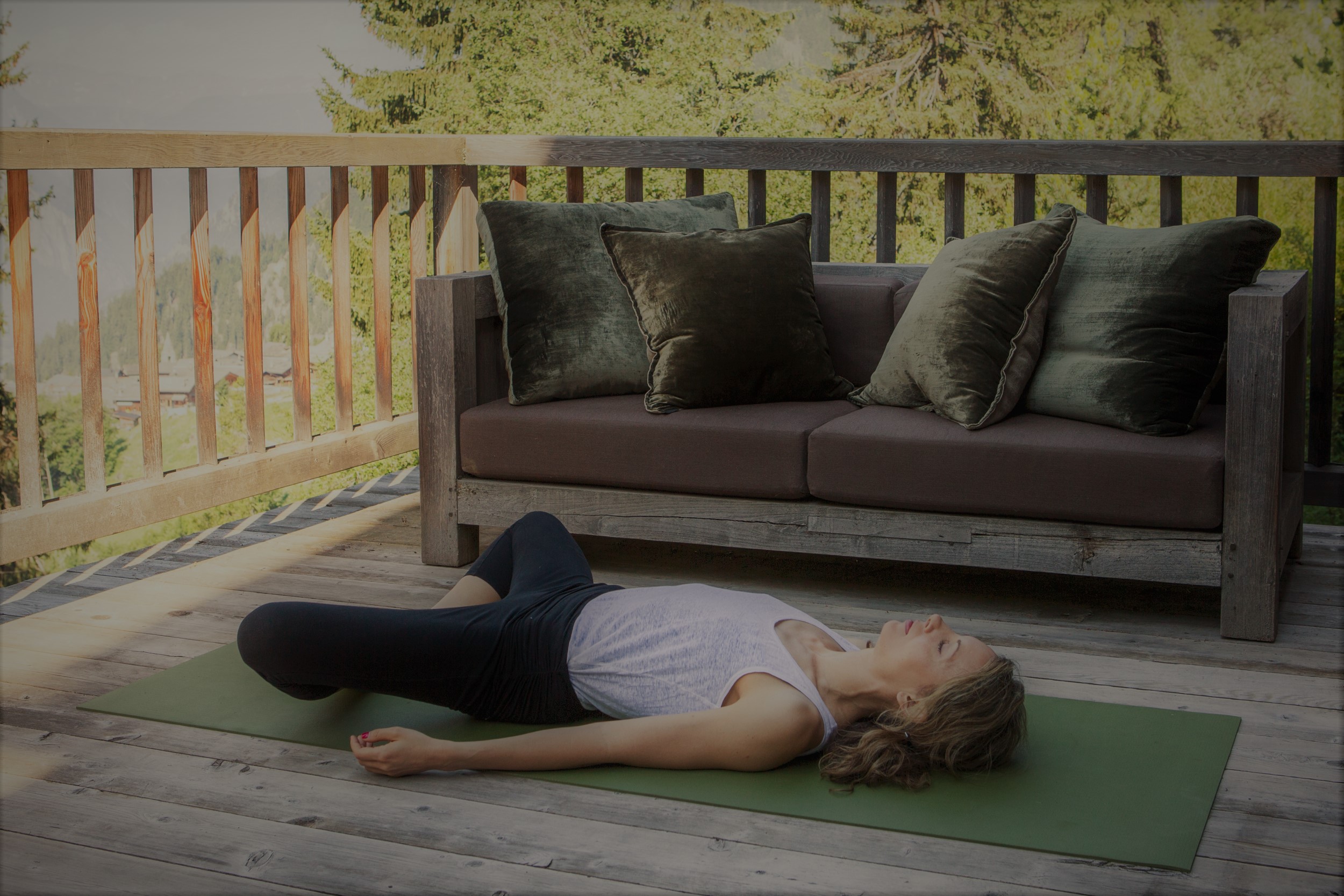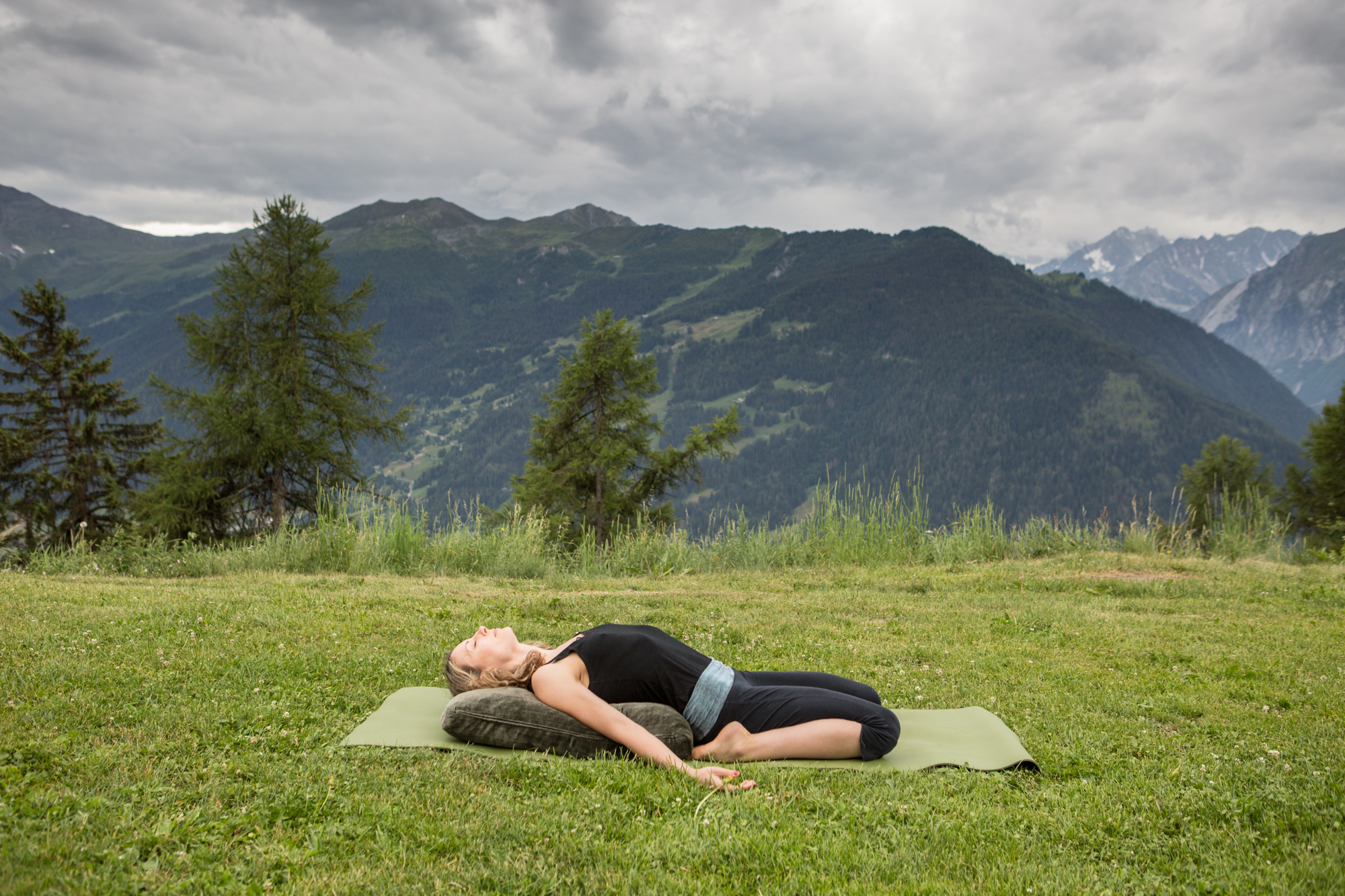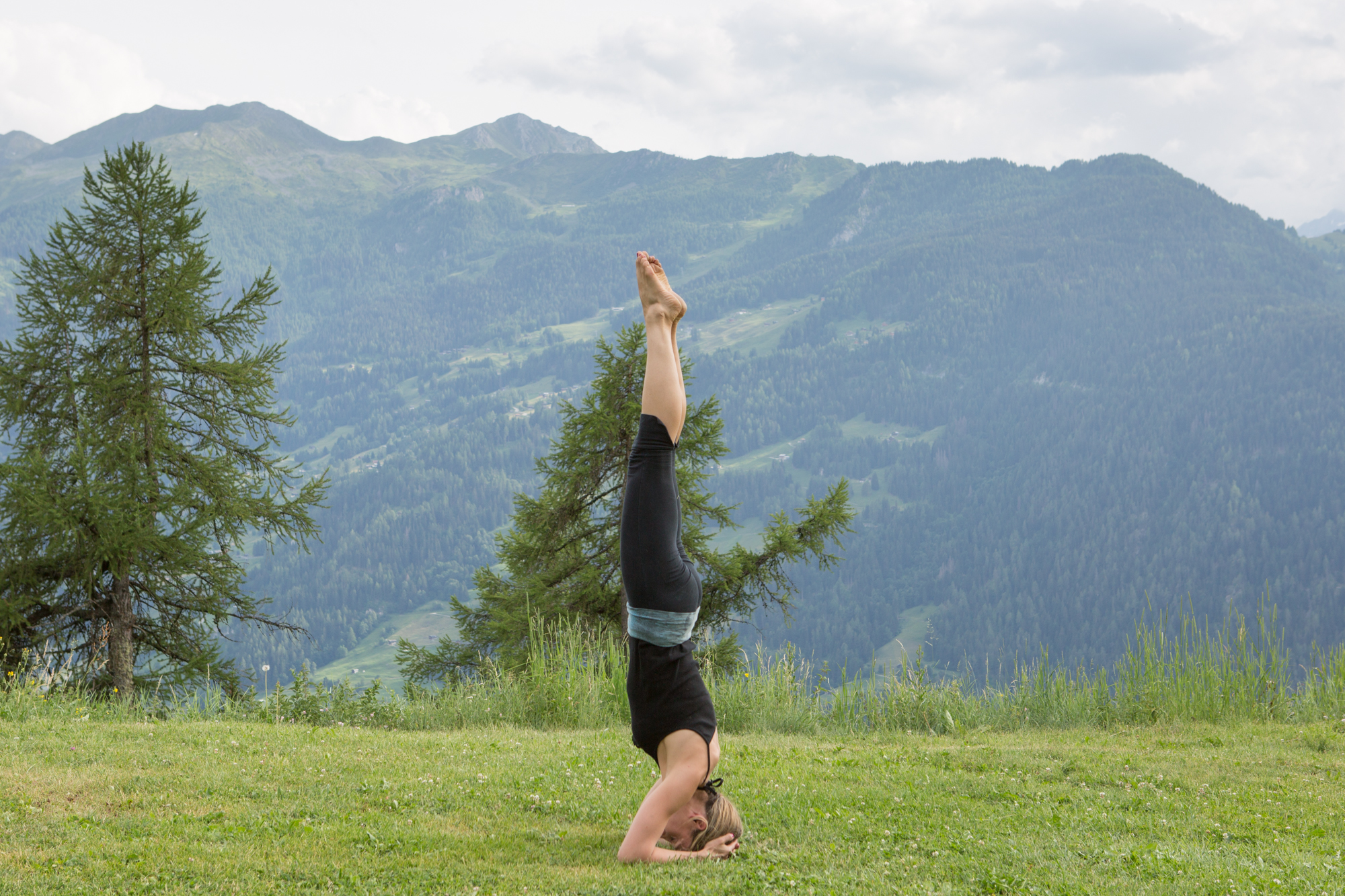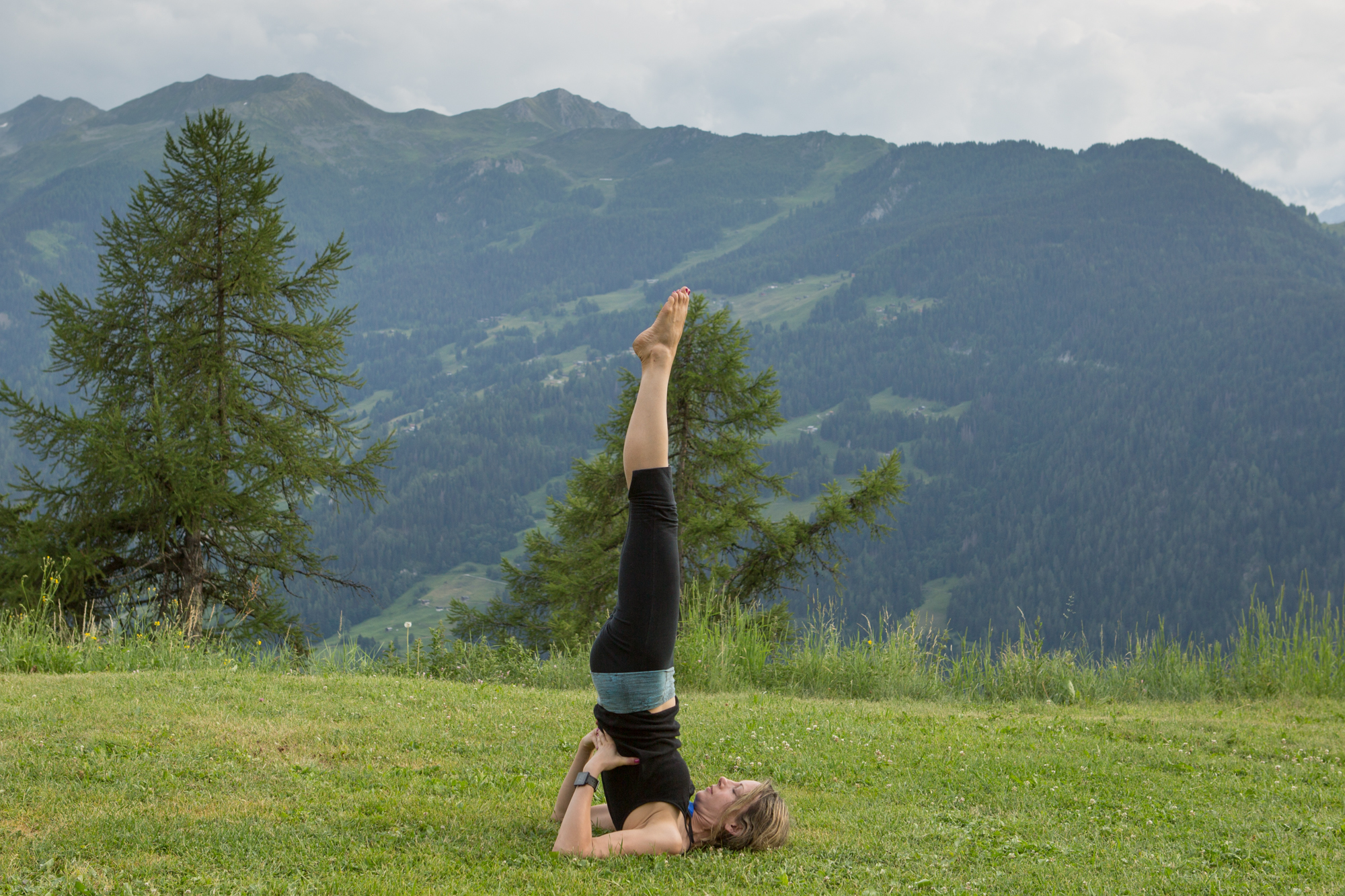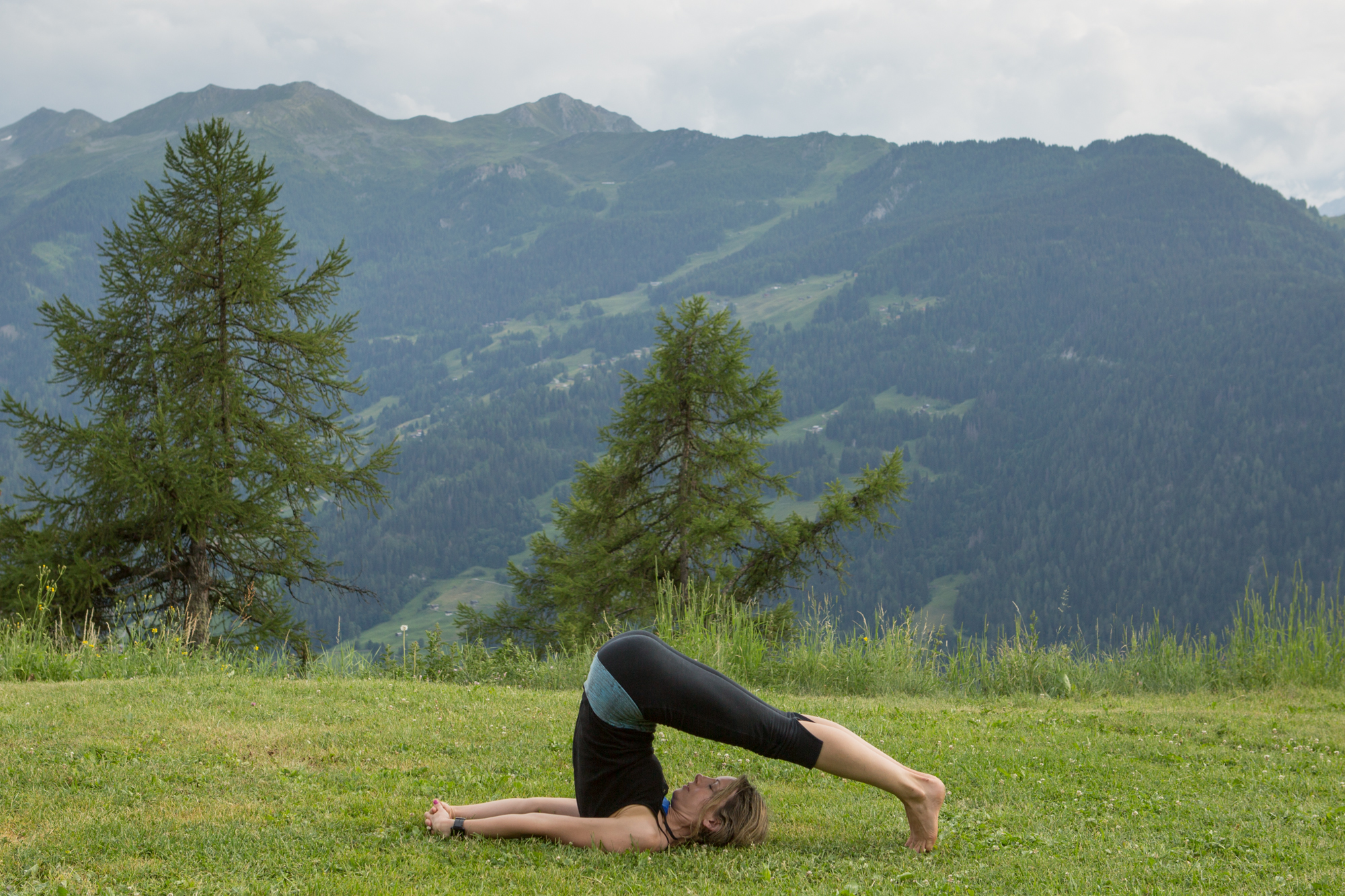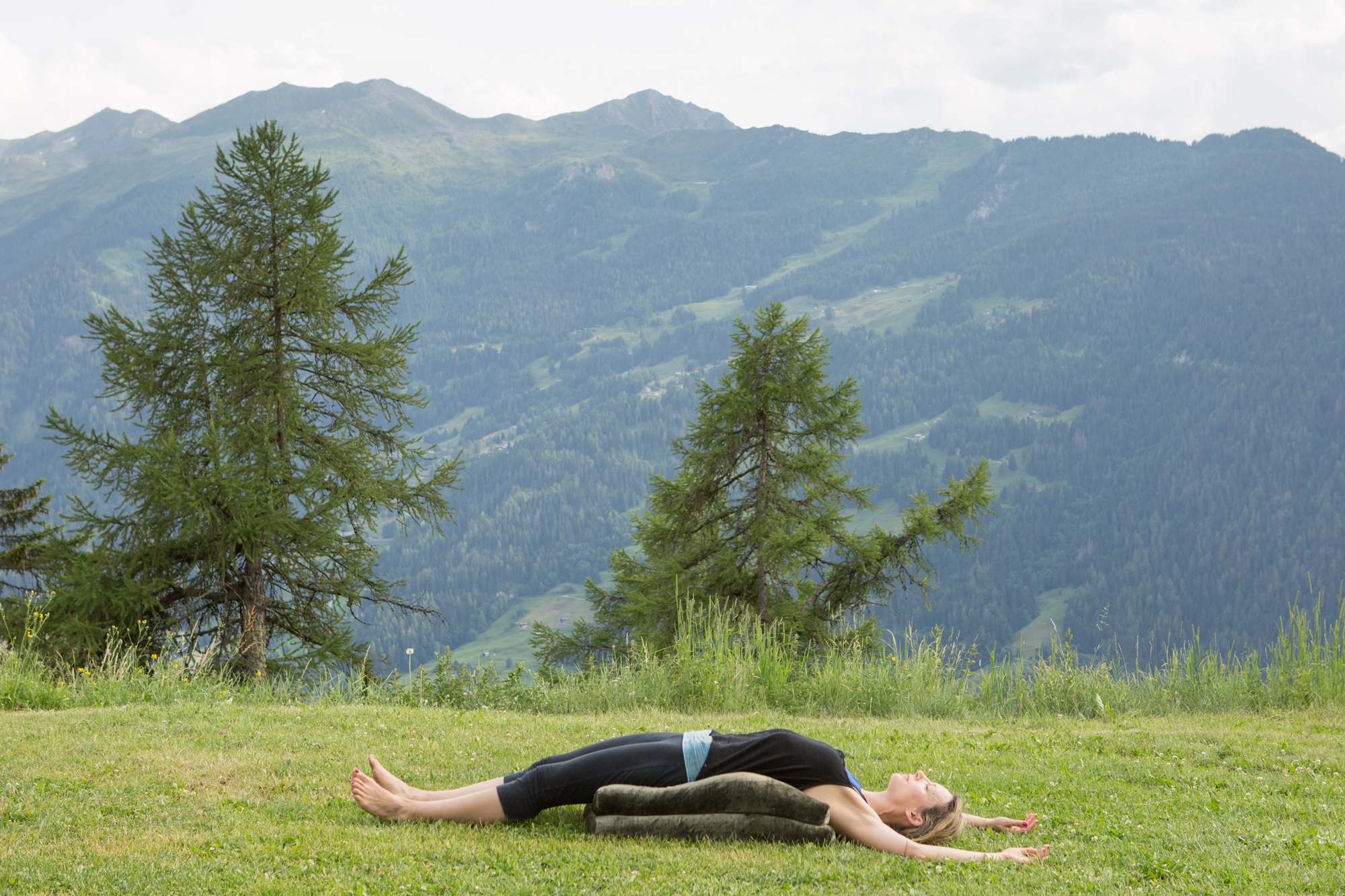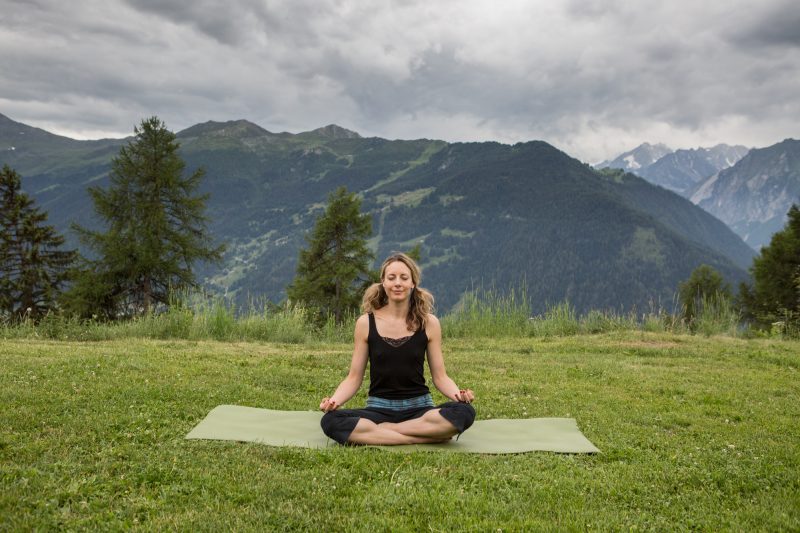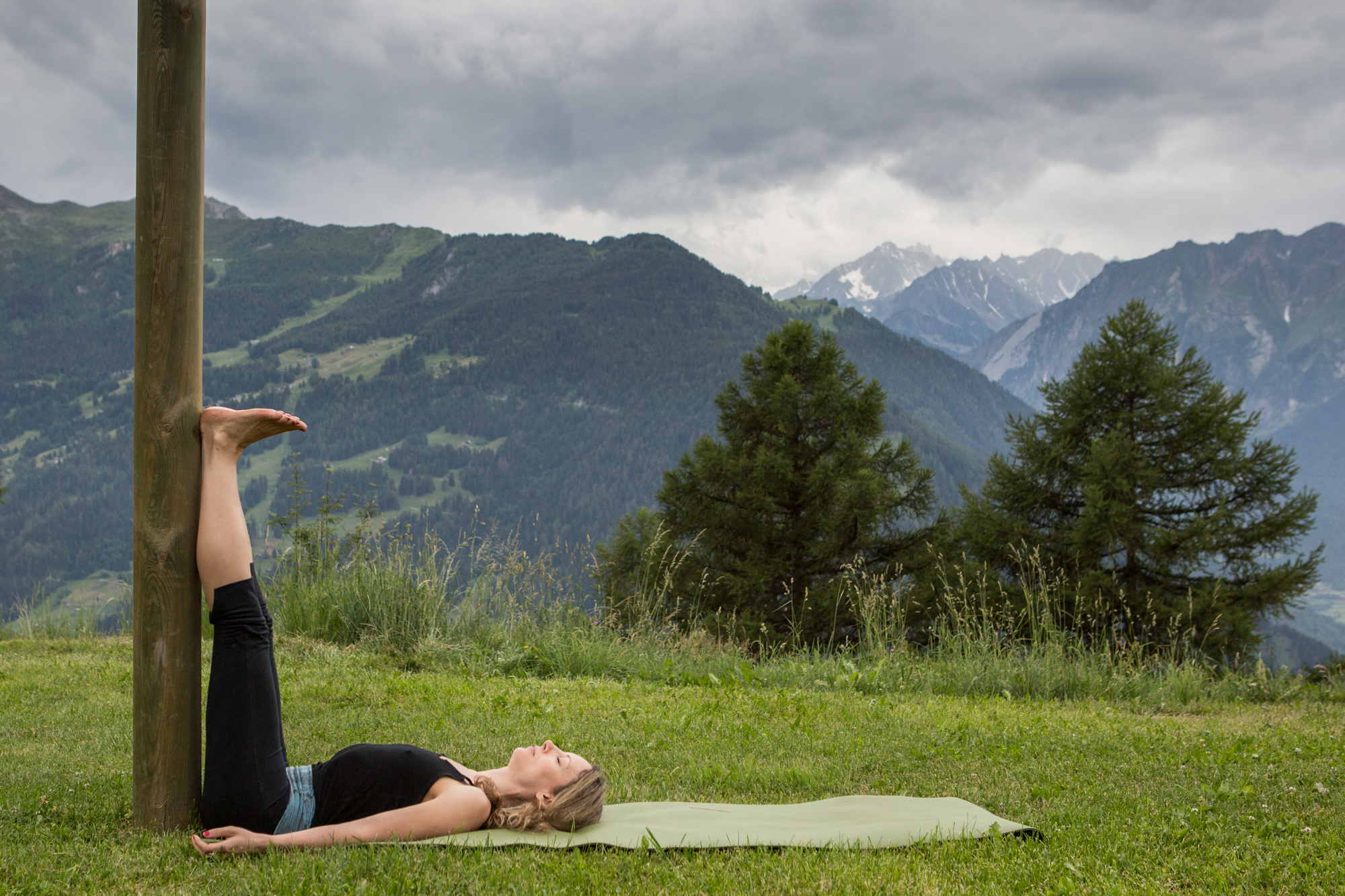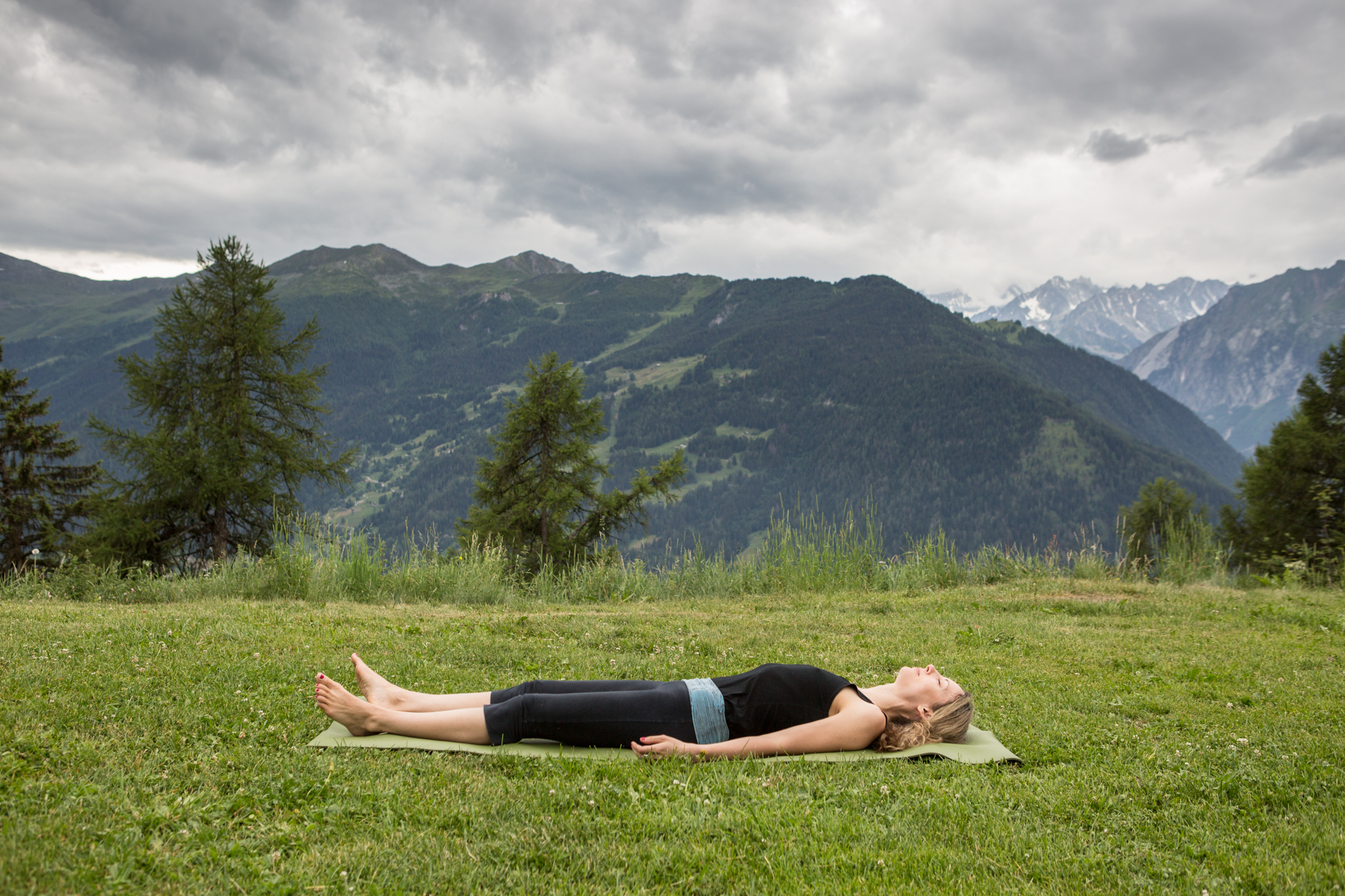Practicing yoga during the day, or before bed, has been shown to help relax the nervous system and aid sleep.
A gentle yoga practice before bed prepares the body for sleep and restoration: Corey, S. M., Epel, E., Schembri, M., Pawlowsky, S. B., Cole, R. J, Araneta, M. R., Barrett-Connor, E. and Kanaya, A. M. (2014). Effect of restorative yoga vs. stretching on diurnal cortisol dynamics and psychosocial outcomes in individuals with the metabolic syndrome: the PRYSMS randomized controlled trial. [online] Psychoneuroendocrinology, 49, pp. 260-71. Available at: https://www.ncbi.nlm.nih.gov/pmc/articles/PMC4174464/ [accessed 14 Sept. 2017].
Read more about how yoga can help with sleep issues here.
Yoga poses for sleep
There are many yoga poses that help the body relax and relieve insomnia. Most of these help activate the parasympathetic nervous system to counteract the stress-related symptoms of our fast-paced, modern lives.
Restorative postures are practiced slowly and held for longer periods of time. This helps to activate the relaxation response that prepares us for sleep. These relaxing postures bring on deep physiological relaxation which mimics the process of falling asleep:
- Heart rate slows
- Breathing becomes more regular
- Muscles lengthen and stretch
- Brain waves slow down
- The breath calms and focuses
- Beginning with gentle movements, such as Cat-Cow Series and Dynamic Forward-Fold Sequence, can help initiate release of stress and lead to deeper relaxation
- Standing forward bends, like Big Toe Pose, activate the parasympathetic nervous system which is responsible for releasing tension and helping the body fall asleep
- Inverted and reclining poses, like Supine Twist, promote sleep by relaxing the body and regulating blood pressure
- Passive poses, like Legs-Up-The-Wall Pose and Child’s Pose, completely relax the muscles and allow a focus on conscious relaxation which prepares the mind for deep sleep
- Relaxing in these postures for an extended period allows time to release tension and develop slow, deep breathing
- Stress is a key issue in the development of insomnia so restorative yoga poses like Corpse Pose and Supported Reclining Bound Angle Pose are particularly helpful in bringing the body into deeper relaxation
The mind-body practices of yoga that are particularly helpful for insomnia include:
Yoga Nidra
- This practice of gradual relaxation is often translated as “yogic sleep.” It helps release tension and quiet the mind’s chatter to diminish insomnia
- To experience Yoga Nidra, follow these steps:
- Slowly scan the body and mind for sensations, emotions and thoughts
- Recognize and release those sensations and feelings, one-by-one
- Gradually drop into a relaxed, resting state
Moon Breath (Chandra bhedana)
- This pranayama practice calms the mind and releases stress. The breath is part of the autonomic nervous system that you can consciously control, which allows you to access the relaxation response that prepares you for sleep
- As you alternate breathing through and covering nostrils, it signals the nervous system to activate the onset of sleep and sends messages to the brain to relax
Cat-Cow Series
- Read more about cat-cow series
Dynamic Forward Fold Sequence
- Read more about dynamic forward fold sequence
Big Toe
- Read more about big toe pose
Supine Twist
- Read more about supine twist
Child’s Pose
- Read more about child’s pose
Corpse
- Read more about corpse pose
Supported Reclining Bound Angle
- Read more about supported reclining bound angle
Legs-Up-The-Wall
- Read more about legs up the wall
Iyengar for sleep
These poses have been taken from B.K.S Iyengar (2008 edition), Yoga The Path To Holistic Health.
Make sure to incorporate these poses during your daily practice, or just before bed, holding each pose for 5 deep breaths, for better sleep.
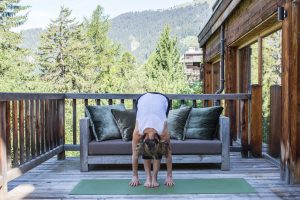
1 Uttanasana
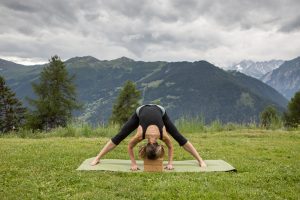
2 Prasarita Padottonasana
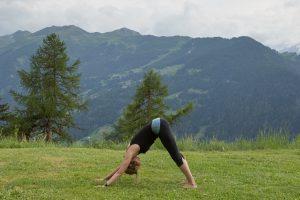
3 Adhomuka Svanasana
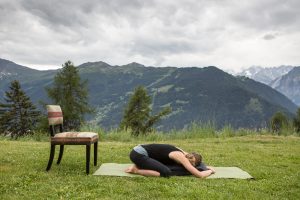
4 Adhomukha Virasana

5 Paschimottonasana
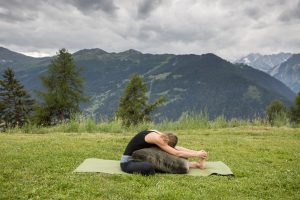
6 Supported Janu Sirsasana
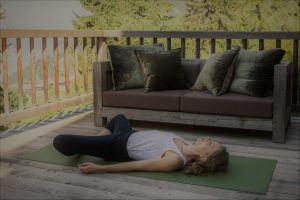
7 Supta Baddhakonasana
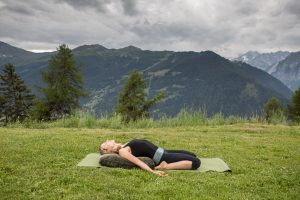
8 Supta Virasana
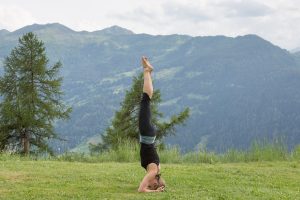
9 Salamba Sirsasana
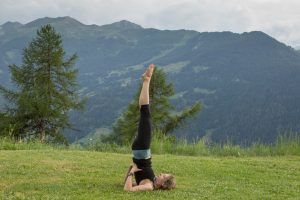
10 Salamba Sirsasana
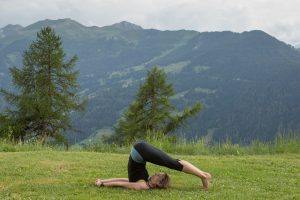
11 Halasana
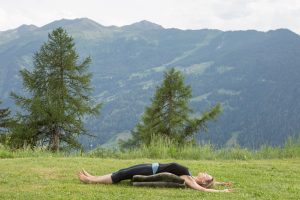
12 Setubandha Sarvangasana 1
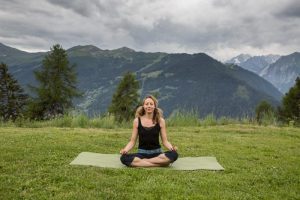
13 Swastikasana
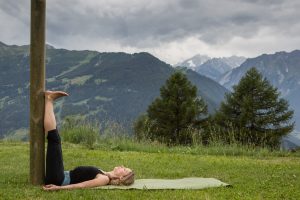
14 Viparita Karani
